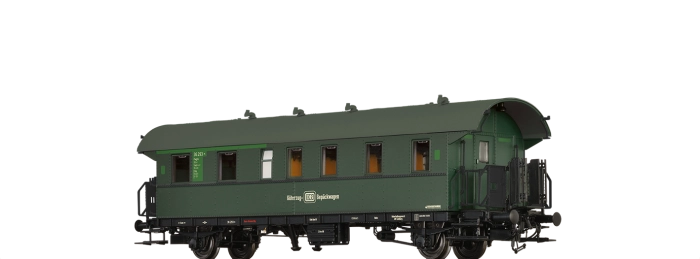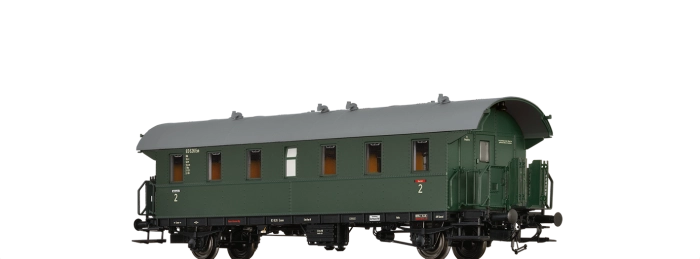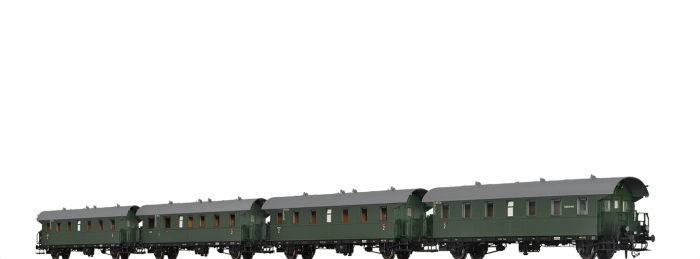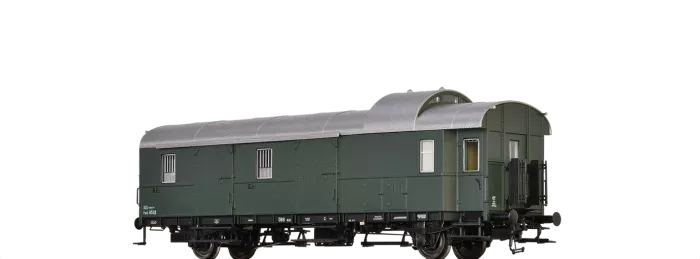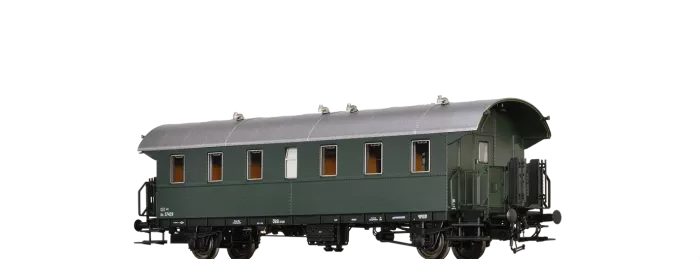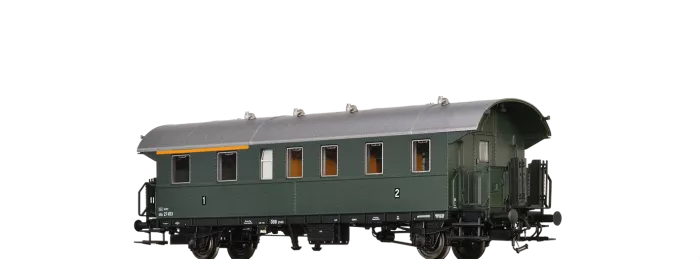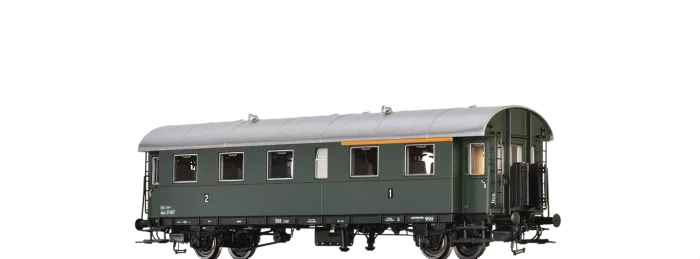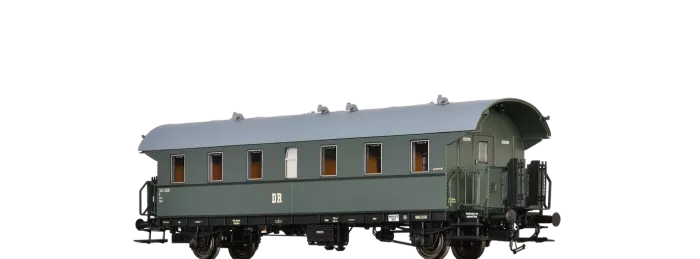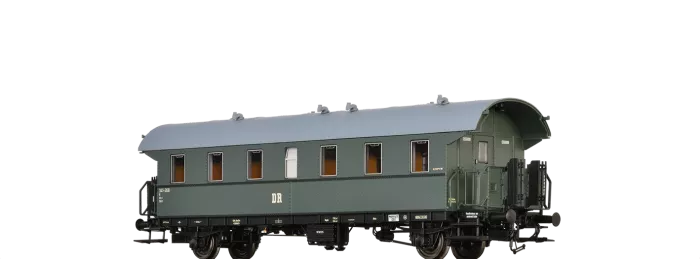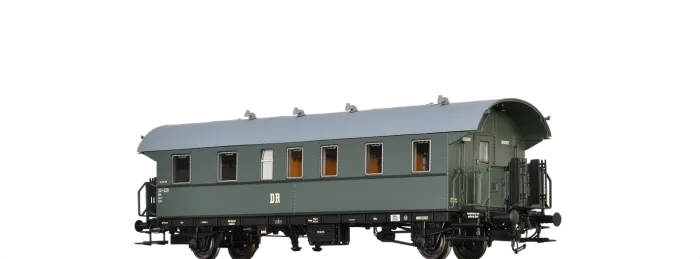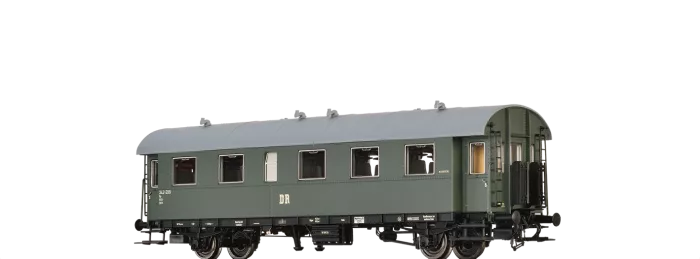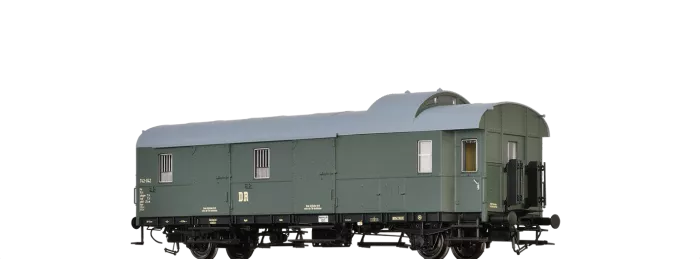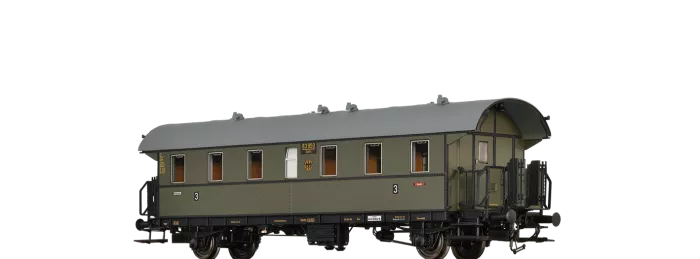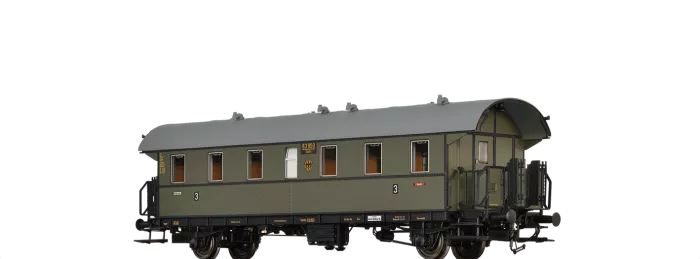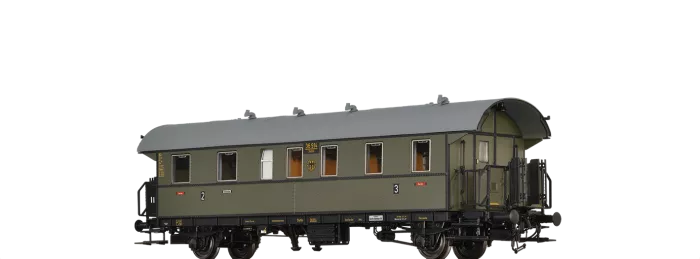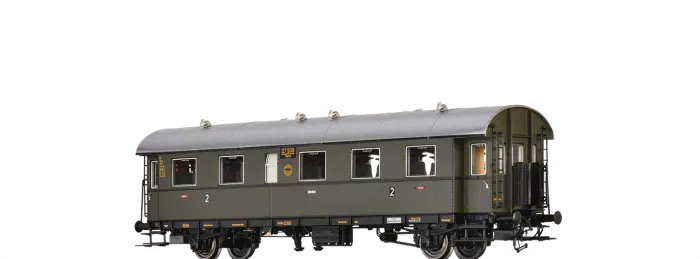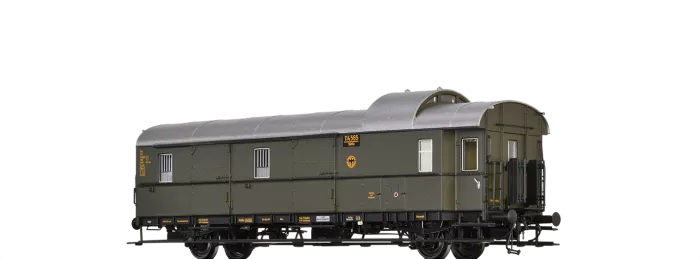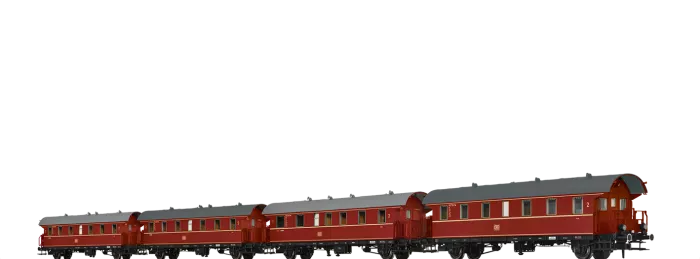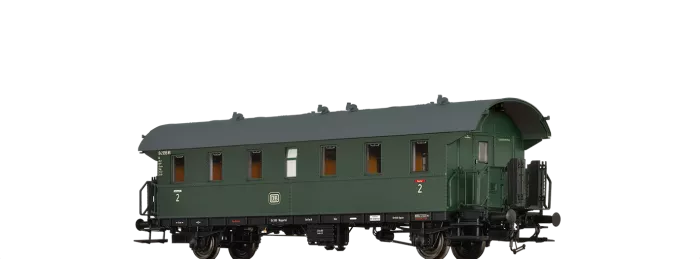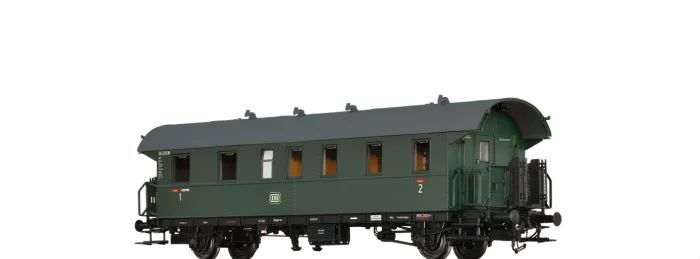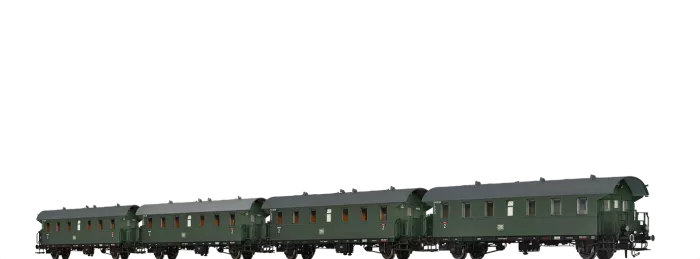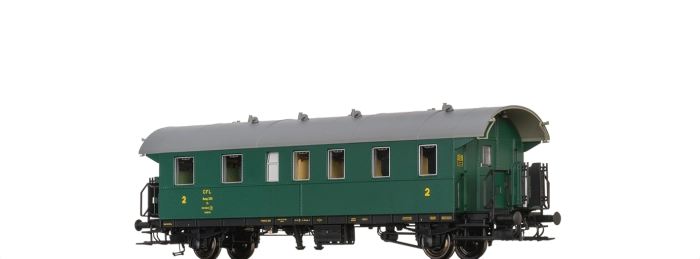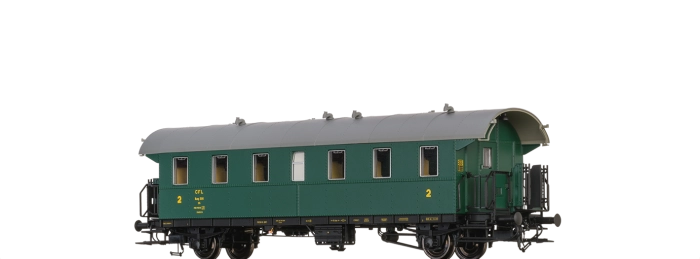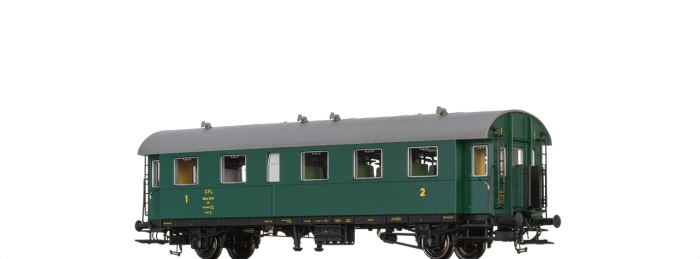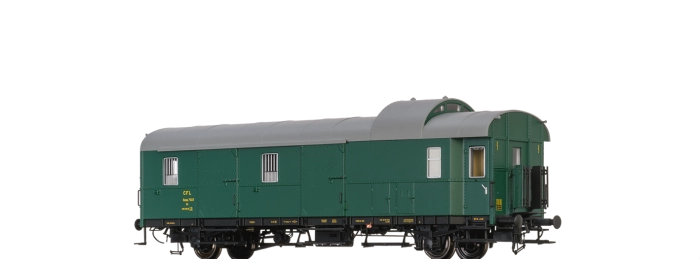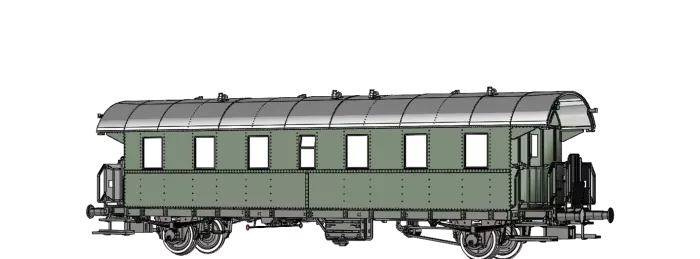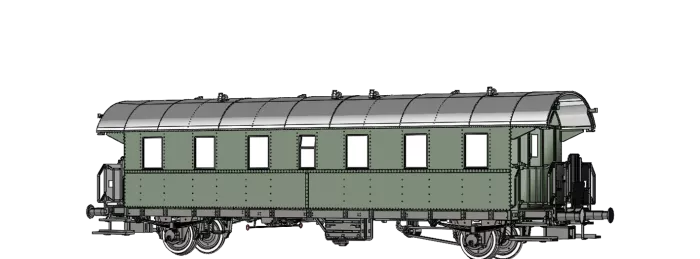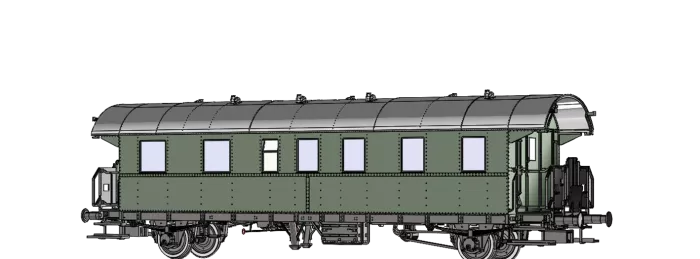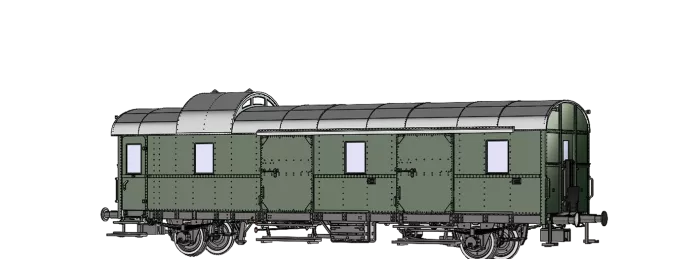
Standard Corridor Coach BPwif-28 DB
Road no.: 84 758 Hmb/Hmb-Hbf
Model details
- Wheelsets in toe bearing
- True to original axle box cover
- Brake shoes in wheel plane
- Extra mounted steps
- Individually mounted axle brake rod
- Multi-part brake system
- Extra mounted Wendler ventilators
- True-to-original interior fittings
- Wheel chocks attached
- Fine engravings and rivets
- Interior lighting prepared or built-in
- The DC models of the Train's Command Car must be equipped with a function decoder, e.g. FH22-4 (Order No. 0018271.00), for digital operation.
Downloads
Info about the original
In the early 1950s, Deutsche Bundesbahn once more explored the idea – pioneered by the Lübeck-Büchner Eisenbahn (LBE) – of using push-pull operations for passenger trains. The main goal was to increase and simplify the frequency and operational procedures throughout the rail networks in conurbations by eliminating the time-consuming process of transferring locomotives at the terminus. From 1954, a HAGENUK command device was available for communication between the reversible train’s command car (“Befehlswagen”) and the locomotive. Similar to the machine telegraphs used in shipping, the driver could use the device to transmit operating commands to the vehicle operator on the pushing locomotive, which had to be acknowledged. The system was designed in such a way that it could be used regardless of the traction type, as long as the corresponding locomotive was also equipped with a command device. To transmit the commands, the vehicles that formed the reversible trains were retrofitted with a 15-pin control line in addition to an additional 10-bar main air reservoir line and given the subtype designation “b”. The vehicles with a driver’s cab received the designation “f”. In total, the Essen, Frankfurt/Main, Hanover, Hamburg and Wuppertal directorates had 26 command cars which remained in service until the first half of the 1960s.



